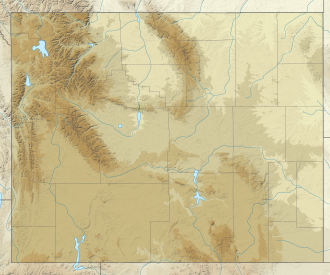| Younts Peak | |
|---|---|
 Younts Peak in Bridger-Teton National Forest | |
| Highest point | |
| Elevation | 12,156 ft (3,705 m) [1] |
| Prominence | 2,241 ft (683 m) [1] |
| Coordinates | 43°58′56″N109°52′00″W / 43.98222°N 109.86667°W [2] |
| Geography | |
Park County, Wyoming, U.S. | |
| Parent range | Absaroka Range |
| Topo map | USGS Younts Peak |
| Climbing | |
| Easiest route | Hike |
Younts Peak is a peak in the Absaroka Range in northwestern Wyoming in the United States and the highest point in the Teton Wilderness. The Yellowstone River is formed near the peak from two streams that rise on the northern and southern ridges of the peak and join at the base of the western ridge. The peak summit itself can be hiked, but accessing the peak is difficult due to its remoteness.

The peak was named after Harry Yount, a hunter and guide considered to be the first ranger in Yellowstone National Park. [3]
